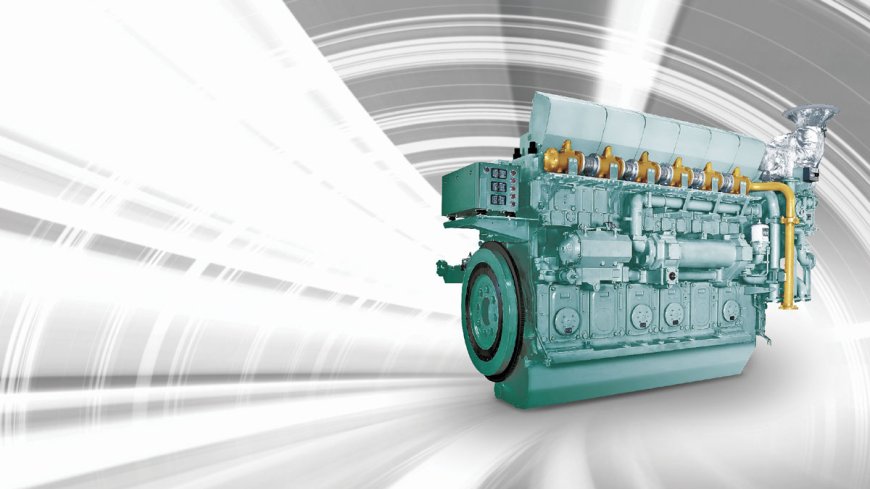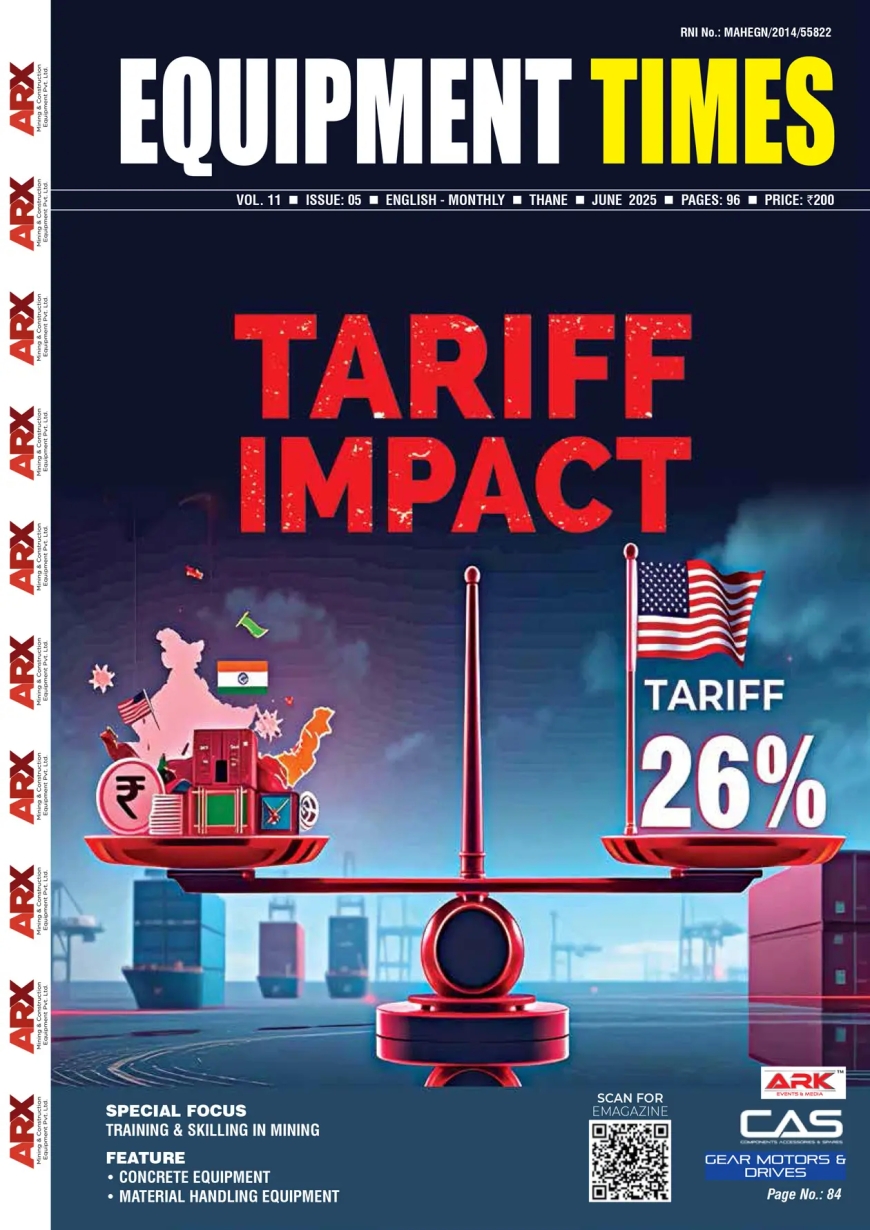The ‘HEART’ of Progress

In construction, where every project is a testament to human endeavour and innovation, the reason behind the scenes is the engine that powers the equipment. These powerful engines are the beating heart of the construction industry, driving progress forward, and turning the wheels of innovation. From towering cranes to earth-moving excavators, engines form the backbone of modern construction, ensuring the heavy-duty machinery operates efficiently and reliably. Equipment Times explores the types of engines, emissions standard, reliability and durability under rugged construction, performance and longevity, maintenance procedures, emissions and fuel efficiency, upcoming developments or innovations and future of engines in construction equipment.
When it comes to construction equipment, diesel engines reign supreme. Their robustness, fuel efficiency, and ability to generate immense torque make them the top choice for heavy-duty applications. The diesel engine’s remarkable efficiency in converting fuel into power makes it the go-to option for powering construction equipment. These engines, with their ability to provide maximum torque even at low speeds, are crucial for machinery like excavators, bulldozers, and loaders, which require enormous power to move heavy materials and tackle challenging terrain.
The Electric Revolution: Hybrid and Electric Engines….
In recent years, the construction industry has seen a growing trend towards the electrification of machinery. Hybrid and electric engines are gaining popularity due to their reduced environmental impact and lower operating costs. These engines offer a quieter, emission-free alternative to traditional diesel engines. While electric engines are still in the early stages of adoption in the construction industry, their potential to revolutionize the sector cannot be underestimated. As technology advances, we can expect to see a significant shift towards cleaner, more sustainable power sources.
Indian Market…
The Indian market for engines used in construction equipment is substantial and dynamic, reflecting the growth and development in the construction sector. The Indian market for engines used in construction equipment has been experiencing significant growth in recent years, driven by factors such as infrastructure development, urbanization, and government initiatives such as “Make in India” and “Smart Cities Mission”. With India adopting stricter emission norms, there is a growing demand for engines that comply with these regulations. This trend is driving the development of more fuel-efficient and environmentally friendly engines. The market is witnessing a shift towards more fuel-efficient and environmentally friendly engines, thanks to technological advancements such as electronic fuel injection systems and hybrid engine technology. The Indian government’s focus on infrastructure development is expected to boost the demand for construction equipment, consequently driving the demand for engines used in such equipment. The increasing trend of renting construction equipment is also contributing to the growth of the market.
While the Indian market is growing, there is still significant competition from imported engines, particularly from established global players.
Fluctuations in raw material costs impacts the profit margins of engine manufacturers.
Any disruptions in the supply chain, whether due to regulatory issues, global events, or other factors, can affect the availability of engines in the market. The Make in India initiative is expected to provide a significant boost to the manufacturing sector, including the manufacturing of engines for construction equipment. The government’s focus on infrastructure development, including the construction of roads, bridges, and ports, will create a sustained demand for construction equipment and, in turn, engines. There is a growing interest in electric engines for construction equipment. While still in the early stages, this presents a significant opportunity for manufacturers to innovate.
Indian manufacturers can explore opportunities for exporting engines to other developing countries where infrastructure development is also on the rise. The Indian market for engines used in construction equipment is robust and poised for further growth, driven by factors such as increased infrastructure spending, technological advancements, and government initiatives. While there are challenges, such as competition from imports and supply chain disruptions, the overall outlook for the market is positive. Manufacturers who can innovate and adapt to changing market dynamics will be well-positioned to capitalize on the opportunities presented by this growing market.
Under the Hood: How Engines Drive Innovation…
Engine manufacturers are constantly pushing the boundaries of innovation to meet the ever-evolving needs of the construction industry. Advanced engine management systems, improved fuel efficiency, and reduced emissions are just some of the areas where significant progress has been made. For example, the integration of GPS and telematics systems allows for real-time monitoring of engine performance, enabling predictive maintenance and minimizing downtime.
Meeting Emission Standards: Adapting to Environmental Regulations…
Environmental regulations are becoming increasingly stringent, driving engine manufacturers to develop cleaner, more efficient engines. Tier 4 Final and Stage V emission standards have led to the development of engines with advanced emission control technologies, such as diesel particulate filters (DPF) and selective catalytic reduction (SCR) systems. These technologies significantly reduce harmful emissions, making construction equipment more environmentally friendly while ensuring compliance with regulatory standards.
Industry speaks…

Kazunori Ajiki, CEO & Chairman – Yanmar Engine Manufacturing India, said, “Yanmar is present in India since early 2000 with many of the engines from Japan plant working in construction segment as part of imported equipment. Yanmar realising the potential of India as a large manufacturing hub for the global industry and a truly fast developing economy, took a leap forward to establish own production facility in the year 2021. Yanmar Engine Manufacturing India Pvt Ltd (YEMI) is the fourth overseas engine manufacturing subsidiary of Yanmar group, Japan for TNV series vertical water-cooled diesel engines. The production of off-highway application diesel engines of sub 36kW power range started in 2022 -23 from Ponneri plant north of Chennai. Since then, Yanmar India unit is steadily evolving to be a formidable player in the agri and construction segment. The plant currently manufactures 1.3, 1.6,2.2, 3.3 ltr capacity engines 82, 88 and 98 mm bore size confirming to Trem 3A and BS3-CEV emission norms prevailing in India as of today. Yanmar India plant is equipped with the same quality systems and facility matching to Japan. Yanmar is one of the very few players globally with technology to manufacture its own fuel system with fuel system components from Kinomoto plant in Japan.”

Nitin Jirafe, Engine Business Leader, Cummins India, said, “In India, our rich history spans more than six decades, marked by the successful integration of our global and local technological expertise across a diverse range of off-highway applications. We remain committed and focused on delivering tailored, innovative solutions to cater to the local market and diverse customer needs. This dedication drives us to develop fit for market products - that are not just robust and reliable but also competitively positioned. Construction equipment has wide variety of applications and comes in various sizes to meet the specific work requirements. Cummins offers an array of 4-cylinder and 6-cylinder products, in 3.9 Liter to 15 Liter size, providing wide range of power from 80 hp to 450 hp, thus addressing a wide variety of construction equipment. Further to address specific regulatory needs, these engines are designed dedicatedly to meet non-emissionized to latest emission standards of CEV BSIV and upcoming CEV BS V. To meet latest emission standards, engines need to be closely integrated with advance aftertreatment system. Cummins inhouse expertise and manufacturing of aftertreatment system enables to deliver the best efficiencies and performance from the overall system.”








